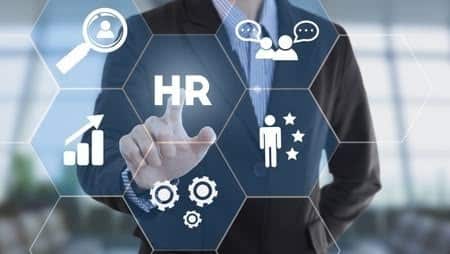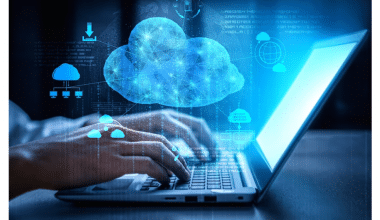A human resources (HR) system is a software application that helps businesses manage employee data. It is used to store and track employee information, such as contact information, job titles, salary information, and performance reviews. Regardless of how big or small your company is, human resources software makes managing people and employee data easier for HR managers. This article, however, covers everything you need to know about an HR system, its management, features, software systems, and examples.
What Is An HR System?
An HR system, or human resources system, is a comprehensive, integrated system that helps organizations manage their employee data. It includes a database of employee information, as well as tools for tracking employee performance, attendance, and benefits. HR systems streamline HR processes and make it easier for organizations to manage their workforce.
For example, you can use it to track employee data, such as contact information, job titles, salaries, and performance reviews. HR systems can also help onboard new employees, manage benefits and vacation time, and generate reports.
Hence, an HR system can be a valuable tool for managing an organization’s most important asset—its people. By automating HR processes, human resources system can save time and improve accuracy. By storing employee data in one central location, it can also help prevent data loss and make it easier to track employee trends.
What Is HR System Management?
HR system management is the process of keeping track of this employee data and ensuring that it is accurate and up-to-date. This can be a complex and time-consuming task, but it is essential for the smooth running of a business.
There are many different HR system management software options available on the market, with features and examples. One popular option is called HRMIS, or Human Resources Management Information System. This software allows users to enter and track employee data. Another popular option is called HRMS, or Human Resources Management System. This software also allows users to track employee data, but it also has additional features like payroll and benefits management.
Meanwhile, these help businesses keep track of employee data accurately. In addition, this software is a great help for companies, as it makes HR system management tasks much easier.
What Is An HR System Software?
An HR system software is a tool that manages human resources within a company. This software tracks employee information, such as contact information, job titles, salaries, and performance reviews.
You can use HR system software to create and manage employee benefits programs such as health insurance and retirement plans. You can also use it to create and manage employee training programs.
There is various HR system software on the market, and the best for an organization depends on the specific needs of the organization. For example, some HR system software is designed for small businesses, while others are for large enterprises. Additionally, some are for specific industries, such as healthcare or manufacturing.
Hence, when choosing an HR software system, it is important to consider the features and functionality that are most important to the organization. Additionally, consider the system’s scalability and whether it will meet your organization’s needs in the future.
What Features Should An HR System Have?
When using HR system management, you should check for the software systems, features, and examples to have a good result. Hence, here are several features that an HR system should have to be effective.
- First, the system should be able to track employee data such as contact information, job history, and performance reviews. This data should be easily accessible to HR staff and managers so that they can make informed decisions about staffing and development.
- Second, the system should have robust tools for communication and collaboration. This will allow HR staff to share information and work together on projects more effectively.
- Additionally, an HR system should have employee self-service features, such as viewing pay stubs and requesting time off.
- And finally, the tool or device should have robust security features to protect sensitive employee data.
What Are The Types Of HR Systems?
There are several HR systems, each with different features and benefits. Some of them are as follows:
#1. Human Resource Information Systems (HRIS)
A Human Resource Information System (HRIS) is a software application that provides a centralized database for storing and managing employee information. This information can include employee contact information, job history, education, skills, and salary information. You can use HRIS systems to track employee performance and compliance with company policies.
Zenefits HR
Most times, HR professionals use HRIS systems to streamline the process of tracking employee information. This can save time and money by reducing the need for manual data entry and data management. Additionally, HRIS systems can provide employees with self-service features, such as viewing and updating their information. Thus, it improves employee satisfaction and reduces the workload of HR staff.
#2. Applicant Tracking System
An applicant tracking system (ATS) is a software application that enables the electronic handling of recruitment needs. Most firms use an ATS to share job openings on a corporate website or job board, screen resumes, and generate interview requests to potential candidates by email or text.
Most ATSs read and score resumes and rank candidates based on how well their resumes match certain keywords and phrases. Some ATSs also parse resumes extracting information such as skills and work history. This information can be stored in a database, making it searchable by recruiters.
#3. Performance Management System
A performance management system is a tool organization use to measure, track and improve employee productivity. The tool provides employees with feedback on their performance, sets goals, and tracks progress. It also allows managers to identify training and development needs.
The benefits of a performance management system include improved communication between employees and managers, increased employee motivation, and improved organizational performance. The system can also help to identify and address problem areas within the organization.
There are several different performance management systems available, and the one that is right for an organization will depend on its specific needs and goals. So, when choosing a system, consider factors such as ease of use, cost, and compatibility with existing systems.
#4. Time And Attendance System
An automated time and attendance system can do wonders for any organization in terms of optimizing efficiency and reducing operational costs. It can also help to improve employee morale and time management. A time and attendance system is a software application that enables employees to clock in and out of work, as well as track their working hours.
Time and attendance systems come in various shapes and sizes, but they all have the same goal: to track employee time and attendance. These systems offer many features, but the most basic ones will track when employees clock in and out and their total hours worked.
Some time and attendance systems can also track vacation and sick days, as well as calculate things like overtime. More advanced systems can even integrate with payroll systems to make things easier.
Furthermore, there are many different benefits that a time and attendance system can offer, but it’s crucial to find the right one for your organization. The best way to do this is to consult a time and attendance expert to help you find the right tool for your needs.
#5. Payroll System
A payroll system is a computerized system business use to manage employee wages, salaries, deductions, and payments. They use the device to generate paychecks, track employee attendance, and calculate taxes.
Businesses of all sizes (from small to large) use payroll systems. They can help firms save time and money by automating the payroll process. They can also help businesses stay compliant with tax laws and regulations. Additionally, you can purchase payroll systems from software vendors.
What Are The 3 HR Systems?
The three HR systems are recruitment, performance management, and training and development.
- Recruitment involves attracting, screening, and selecting qualified candidates for a company.
- Performance management involves setting goals and objectives, measuring progress, and giving feedback to employees.
- Training and development involve providing employees with the skills and knowledge they need to be successful in their jobs.
What Are The Three Most Common HR Models?
The three most common HR models are the functional, business partner, and shared services models.
- The functional model is the traditional HR model, where HR is a separate department with its set of functions and responsibilities.
- The business partner model is where HR is integrated into the business and works closely with business leaders to provide strategic input and advice.
- The shared services model is where HR is centralized and provides services to the entire organization.
What Are Some Examples Of HR Systems?
When it comes to HR systems, there are examples you should know. Some popular examples of HR systems are: BambooHR, ADP Workforce Now, Zenefits, Paycom, and Deltek Talent Management.
What Are Core HR Systems?
Core HR systems are the backbone of HR operations. They are responsible for tracking and managing employee data, performance reviews, compensation and benefits, and other HR-related activities. However, these systems can include employee databases, HR software, and human resources policies and procedures.
Which Is The Best HR System?
There is no one “best” HR system. Different organizations may prefer different systems for different reasons. Some common HR systems include employee tracking systems (ETS), human resources management (HRM) software, and payroll systems.
What Should Be Included In An HR System?
An HR system should include a way to track employee information, such as contact information, job history, and performance reviews. It should also include a way to track company policies and procedures.
What Is The Biggest HR System?
The biggest HR system is usually the one that is the most comprehensive and covers most areas of HR. This system is usually the most expensive and can be the most difficult to implement. However, it can also be the most effective in terms of managing HR for a company.
What Systems Do HR Departments Use?
Most HR departments use an applicant tracking system (ATS) to help manage the hiring process. They use ATS to post job openings, screen resumes, track applicants, and schedule interviews. Some ATSs integrate with other HR software, such as performance management and employee onboarding systems.
In addition to an ATS, HR departments may also use employee self-service (ESS) systems. An ESS is a web-based application that employees can use to view and update their personal information, request time off, view their pay stubs, and more. ESS systems often include a mobile app so employees can access their account information.
Wrapping Up
An HR system is a critical part of any organization. It is responsible for managing employee data, tracking employee performance, and providing tools for employee benefits.
An HR system can be complex and confusing, but every organization needs it to manage its employee data effectively. Many types of HR system software are available, and the features vary. So, when choosing an HR system for your business, consider your specific needs and objectives.






